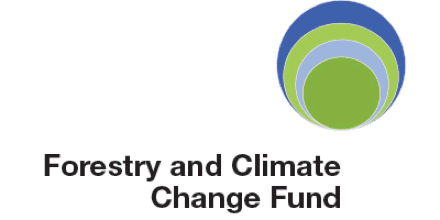We have adopted a set of environmental and social principles to guide our activities to support a change in perception regarding the value of secondary and degraded forests by local forest owners, users and other economic agents, from a land use option with little value to a resource providing economic and social benefits and enhanced livelihoods and wellbeing.
Preface
- This page describes the Environmental and Social (“ES”) Principles of the Investment for Development SICAV – Forestry and Climate Change Fund (“FCCF” or the “Fund”).
- A “principle” for this purpose is a fundamental proposition (SOED, Oxford University Press 1973 p.1672) incorporated in the Fund’s Theory of Change. It is aspirational in characteristic, reflected in the impacts that the Fund seeks to bring about as well as in the risks and opportunities that the Fund seeks to manage. The ES Principles translate into its ES standards and underpin the ES aspects of its policies, practices and financing.
- Together the Fund’s ES Principles – along with its ES standards, policies and practices – are designed to support a change in perception regarding the value of secondary and degraded forests by local forest owners, users and other economic agents, from a land use option with little value to a resource providing economic and social benefits and enhanced livelihoods and well being. The Fund’s Theory of Change translates into the following components:
- Investments in the sustainable management of productive secondary and degraded forests (“SDF”) which lead to an increase in natural capital and economic value through forest restoration, enhancement of degraded forest and the reduction of deforestation;
- Investments in value chains to enable the commercialization of products derived from SDF, including products derived from lesser-known species, to provide financial value to SDF and incentivize sustainable forest management in the long-term; and,
- Promotion of forestry and business models which result in a fairer and more inclusive allocation of rewards to all agents along the value chain, including small forest owners and forest-based communities, indigenous peoples and women.
- The ES Principles of the Fund – along with its ES standards, policies and practices – are operationalized through the Fund’s Environmental and Social Management System.
- They are also reflected in its contractual and informal relationships with investees and all other stakeholders as well as in the governance of the Fund. They are an integral part of the Fund’s monitoring and reporting system. They are promoted through the Fund’s Technical Assistance Program.
Overarching Principles
- Through the restoration of secondary and degraded forests, the Fund seeks to contribute to the preservation of biological diversity and to address the causes and consequences of climate change through both mitigation and adaptation. These objectives are aligned to the UN Convention on Climate Change (“UNFCCC”) and the UN Convention on Biological Diversity (“UNCBD”) in support of the UN agenda for sustainable development, encapsulated in the Sustainable Development Goals (“SDGs”).
- The Fund verifies that its investments are consistent with the climate mitigation and adaptation objectives of the host country, including its commitments to the Paris Agreement as well as the three main goals of the UNCBD. The Fund addresses in particular the following Sustainable Development Goals: sustainable forest management (SDG 15), climate change mitigation (SDG 13), poverty alleviation (SDG 1), gender equality (SDG 5), decent work conditions (SDG 8) and promotion of wood as a local, low-carbon material (SDG 9).
- The Fund’s strategy is aligned to the restoration and protection of biodiversity and ecosystems through sustainable forest management as expressed in the Bonn Challenge and as defined in the sustainable investment framework of European Union Regulation 2020/852 (the “EU Taxonomy”).
- The Fund’s actions are closely aligned with the six Global Forest Goals formulated in the UN Strategic Plan for Forests 2030 as adopted by the United Nations General Assembly in April 2017.
- The Fund requires that all its investments comply with national environmental and social laws, including legal obligations pertaining to the host country’s adherence to relevant international legal frameworks, notably those cited above. The Fund also contributes to the creation of enabling legal and regulatory environments conducive to the sustainable management of SDF.
- The Fund recognizes the responsibility of economic agents not only to respect human rights but also to address adverse human rights impacts that its financing might cause or contribute to. In this regard the Fund adheres to the Universal Declaration of Human Rights, and in particular the labour standards of the International Labour Organization and the Declaration on the Rights of Indigenous Peoples.
- The Fund’s procedures are designed and applied to ensure that any financing does not facilitate money laundering and the proliferation of terrorist activities.
- Within the framework of projects financed by the Fund, forest management must adhere to the Principles and Criteria of the Forest Stewardship Council (FSC) and undergo external certification. Projects that involve the transformation and commercialization of timber should ensure traceability (or chain-of-custody), and have a due diligence or legal assurance system in place. The Fund recognizes that projects might need time to implement processes and procedures in these respects.
- The Fund does not finance projects the activities of which are included in the International Finance Corporation’s (IFC) Exclusion List and applies the IFC’s Operating Principles for Impact Management.
- The Fund aligns with the strategy “Attribution des fonds pour le financement international de la lutte contre le changement climatique” published by the Luxembourg Ministère de l’Environnement, du Climat et du Développement Durable.
Environmental Principles
- The Fund applies an exclusivity principle of investing only in certain sectors and activities that fulfil one or a number of the following environmental characteristics:
- forests that are managed in a way that promotes their environmental sustainability, aiming for the long-term conservation and growth of the forest. The Fund has developed a forest management approach adapted to SDF which focuses on future crop tree management while excluding large clear-cutting.
- new and existing forest management enterprises willing to implement its forest management approach, contributing to the emergence of management practices adapted to SDF in the tropics. The Fund recognizes that this is a learning process involving a large number of stakeholders, including national forest authorities.
- new and existing timber processing companies using, or planning to use, wood from a diverse range of species found in SDF and who support sustainable forest management practices through their sourcing policies.
- Conversely, the Fund will not invest in:
- forests in which landowners have been responsible for significant deforestation of secondary, degraded or primary forests on the same land in the recent past. The Fund will evaluate the land use history according to the FSC Conversion Policy when making such an assessment.
- projects or enterprises which use biomass for energy derived unsustainably from natural forests.
- forest management which involves the introduction of non-native species.
- Through its investments, the Fund seeks to contribute to greenhouse gas sequestration, using good practice carbon accounting methodologies to measure its impact in this regard. At the same time, through sustainable forest management it helps local communities adapt to climate change as well as strengthening the resilience of forest-related eco-systems.
- The Fund aims to conserve biodiversity, preventing any net loss of biodiversity and achieving a net gain where this is feasible. The Fund helps conserve and enhance water supplies through a river catchment-based approach to forest management.
- The Fund takes into account the landscapes in which it invests and seeks to contribute to the sustainability and resilience of these landscapes and their associated eco-systems.
Social Principles
- The Fund supports forest management and value chains that are integrated into and beneficial for local communities. The Fund provides financing to local small and medium scale entities (both for-profit and not-for-profit). It fully engages with these and all other affected and relevant stakeholders in designing and implementing projects. The Fund ensures that free, prior and informed consent (“FPIC”) is obtained when working with local communities and indigenous peoples. FPIC includes the involvement and consent of legitimate community representatives in the project formulation, design, financial negotiation and structuring and project implementation and operation.
- The Fund does not acquire forest land. The Fund ensures that its investees do not infringe on statutory and customary land rights of small forest owners, and local and indigenous communities. The Fund’s investments should not lead to involuntary resettlements of local communities and shall not – directly or indirectly – lead to forced evictions. The Fund’s investments shall not infringe on the access and use of culturally and socially important forest sites.
- The Fund acknowledges the value of traditional forest knowledge and its contribution to sustainable practices. Local knowledge, innovations and practices should be respected, protected and used as an input to improve the positive impact of projects.
- The Fund promotes decent work and working conditions and ensures that projects and economic agents in which it invests respect national labour laws and offer adequate social protection to their employees. Investees should provide a safe and healthy work environment, in particular for employees working in the forest or timber transformation industries. In case investees contract third parties or work with local communities for certain tasks, they should make reasonable efforts to ascertain that the third party or community organization is reputable, and respects workers’ rights, including occupational health and safety laws and regulations.
- The Fund recognizes that a diverse workforce in terms of ethnicity, gender and age is important in building successful enterprises in the forestry sector. The Fund recognizes that women are under-represented in the forestry sector and wood transformation industry. The Fund promotes incremental change towards a more balanced workforce evidenced by a gender and diversity strategy.

